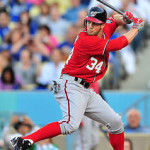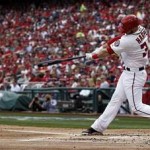The Best! That They can Be?
What would it take for the following Batters to become even better Hitters than they have already presented themselves to Be?
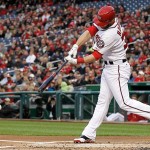
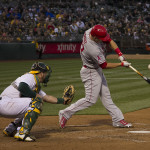
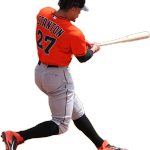
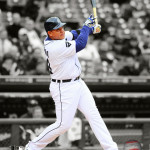
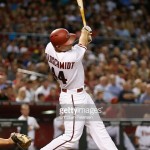
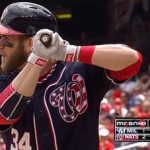

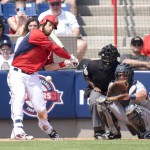

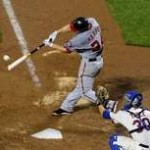 Bryce Harper has finally begun looking and acting like the “Big-Leaguer” he seemed destined to become. I was never impressed with all the “hype” that came with the accolades that preceded his arrival into the professional ranks because I knew that all achievements attained in “formative” years could hardly stand the test of replication on the Major-League level. I wanted him to succeed from the beginning because he embodied everything I wanted to be, do, and have when I was 17 years old. (http://www.cbs.com/shows/cbs_this_morning/video/0Gczy9M1_YFSmuahcP_P6xUS_4ndES8v/paciorek-s-perfect-mlb-stats-after-one-day-career/)
Bryce Harper has finally begun looking and acting like the “Big-Leaguer” he seemed destined to become. I was never impressed with all the “hype” that came with the accolades that preceded his arrival into the professional ranks because I knew that all achievements attained in “formative” years could hardly stand the test of replication on the Major-League level. I wanted him to succeed from the beginning because he embodied everything I wanted to be, do, and have when I was 17 years old. (http://www.cbs.com/shows/cbs_this_morning/video/0Gczy9M1_YFSmuahcP_P6xUS_4ndES8v/paciorek-s-perfect-mlb-stats-after-one-day-career/)
But Bryce went beyond any superficial exterior dimension of sensationalism with his apparent arrogance and self-centered demeanor. Although he and I had the inexhaustible energy to do what it took to be the best we could be, he obviously went about pursuing his “Goal” in a much more intelligent way. In this modern era he probably had access to better means of facilitating a “strength-developing” program that would not have endorsed the practice of no-handed “head stands” to create a 19 1/2 inch neck to look like Mickey Mantle. Dumb! Whatever Bryce does, or did, to develop the strength and speed of his swing is a testament to a well conceived plan to maximize power, flexibility, and quickness with which to provide for the proficient use of his body to accentuate his efforts on the Baseball Field.
Although his first few seasons were marked with fewer successes than he envisioned, and quite a few “growing pains”, his batting potential was evident along with a high quality defensive prowess and a dogged determination to be the best he could be, or at least the equal to Mike Trout. I know that’s how I would have felt, “How can I be better than the ‘Best’?” To his credit, he made each of his setbacks temporary, until he found, what many “experts” concur, an intangible formula that has him blossoming into the Star he expected himself to be.
I say “intangible” because most, if not all, commentators are at a loss for tangible hypotheses as to why he seems to have suddenly found the secret to credible batting success. “They” recall that the evidence first appeared in last year’s playoffs, where he was the only Nationals player to make a contribution to the ill-fated “post-season”. His short-lived individual triumphs must have whet his appetite for enhanced understanding of refined batting efficiency. The “new season” must have fostered a “new resolve” to temper somewhat the “old-mentality” to rely completely on an obsolete notion that he could dominate all situations with physicality alone. “With all my physical strength, there must be some technical reason why I am off-balance on “off-speed” pitches, and I consistently “slice” many fast-balls to the opposite field instead of making impact-full, solid contact,” he may have contemplated.
Bryce Harper may very well be on his way to achieving a status as one of Baseball’s best hitters with his adaptation to the Principle(s) of applying mechanical correctness to his batting regimen. At this point in his developmental continuum he has reduced 2 margins for error that had previously limited his long awaited success. He begins his batting approach now with his bat on shoulders with arms and hands relaxed  (like Posey, Goldschmidt, Stanton) while awaiting the pitcher’s commitment to throw, instead of hands and bat above his head
(like Posey, Goldschmidt, Stanton) while awaiting the pitcher’s commitment to throw, instead of hands and bat above his head 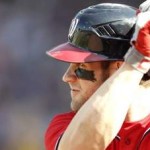 . When the pitcher commences in throwing, Bryce addresses the in-coming pitch with elbow, hands, and bat below the shoulders
. When the pitcher commences in throwing, Bryce addresses the in-coming pitch with elbow, hands, and bat below the shoulders 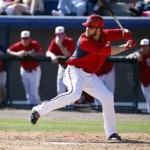 and in a low center of gravity, instead of
and in a low center of gravity, instead of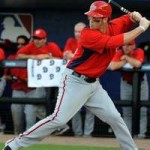 with elbow above shoulders, taller stance and higher center of gravity.
with elbow above shoulders, taller stance and higher center of gravity.
With elbow, hands, and bat lowered, in a strong, crouching stance a batter is assured of a low center-of-gravity, which allows for better balance and clearer vision of an incoming pitch, as well as a smaller strike-zone for the pitcher (and umpire) to negotiate. With his current stance and initial approach to the ball, Bryce will experience more success than he did previously, if he can sustain a “timing-mechanism” to differentiate consistently the contrast of speeds that any smart pitcher (Cueto, recently) will devise to off-set his “timing”. Herein lies the main problem Bryce will encounter while sustaining a consistent “Batting Regimen” to establish himself as the “Best” of the “Best-Hitters” in Baseball.
Bryce Harper has a Beautiful swing 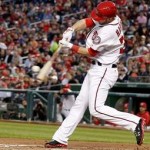
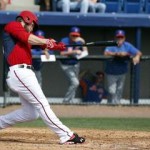
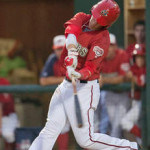 . The Principle he applies at the contact point is flawless, just like all good and great hitters.
. The Principle he applies at the contact point is flawless, just like all good and great hitters.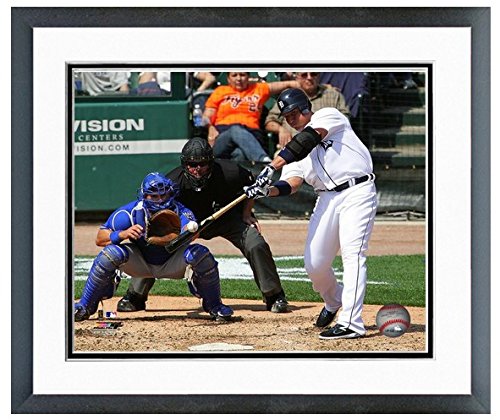


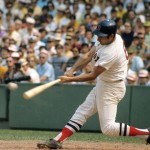
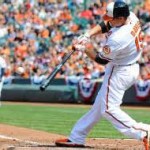
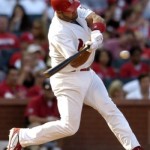
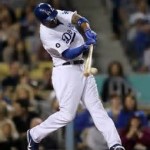
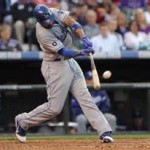
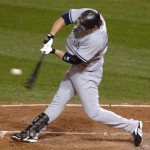
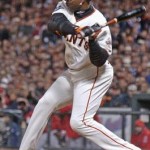
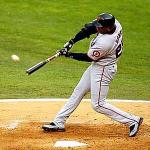
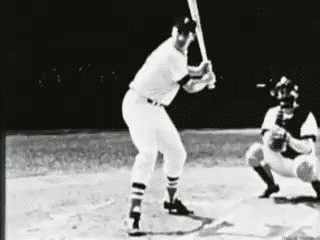 However, even with the “great” swings that all the batters (above) demonstrate, not any of them experience the same consistent “effect” with every pitched ball they swing at. Even the great Ted Williams (above) would have appreciated the pitch to be delivered at the same place, at the same speed, and be able to demonstrate the same stroke all the time. He would have batted at least .500 perennially. He would know exactly when and where to place his front foot, and have perfect timing with every swing. “Hitting a baseball (with authority) is the most difficult thing to do in all of sports”, is a quote made famous by Mr. Williams. It is made even more difficult by those “would be” proficient hitters, with all their physical ability, who do not understand the “margins for error” that most of them impose upon themselves.
However, even with the “great” swings that all the batters (above) demonstrate, not any of them experience the same consistent “effect” with every pitched ball they swing at. Even the great Ted Williams (above) would have appreciated the pitch to be delivered at the same place, at the same speed, and be able to demonstrate the same stroke all the time. He would have batted at least .500 perennially. He would know exactly when and where to place his front foot, and have perfect timing with every swing. “Hitting a baseball (with authority) is the most difficult thing to do in all of sports”, is a quote made famous by Mr. Williams. It is made even more difficult by those “would be” proficient hitters, with all their physical ability, who do not understand the “margins for error” that most of them impose upon themselves.
Bryce Harper appears to have reduced slightly two definitive “margins for error”, the extremely high-hands and bat, and a high stance. His center-of-gravity is thus lower, so his balance and vision will be better than before. With his physical strength and determined mental attitude, he needs only to diminish or eliminate the most detrimental of the myriad “margins for error” – The Stride – in order to attain his ultimate goal of being the Best of the Best hitters in Baseball. As of today (7/8/15), he has the strongest and fastest body-action for bringing the bat to the ball. But with his stride, he is sometimes at a loss for applying the “front-foot plant” at the correct time to initiate the hip and shoulder action of his powerful swing.
What is the only way to assure oneself of readiness to swing his bat? The front foot must be planted! The only place where “timing” can be disrupted is in the stride. The batter never really knows when to put his foot down. Therefore, never pick up the front foot! Simply generate the needed momentum prior to swing by readying the hips to bring the shoulders, arms, and bat to the ball. By not striding, any batter will see the ball with utmost clarity, and allow for much better contact, no matter how strong he is.” But a player with the power and quickness of a Bryce Harper would eliminate the greatest deterrent to batting proficiency if he would not stride. (See article, “Inertia…” 9/13/13)
* As a footnote to the Bryce Harper “Future-Legacy”, when he perfects his “No-Stride” approach to hitting, it will also have been revealed to him the additional advantage of “chocking-up” on his bat (for maximum bat control), as well as pointing his front foot at a 120 degree angle to the pitcher (like Williams, DiMaggio, Bonds) 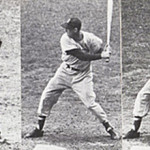
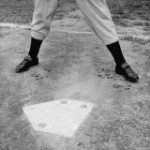
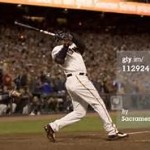 . The “120 degree Principle” will eliminate the sensation of twisting, spraining, or dislocating the ankle and knee when the batter’s stance has his front foot pointing toward home-plate when he starts and commences with his swing
. The “120 degree Principle” will eliminate the sensation of twisting, spraining, or dislocating the ankle and knee when the batter’s stance has his front foot pointing toward home-plate when he starts and commences with his swing  (like Matt Kemp and others). When the foot is at 90 degrees to the pitcher, it is impossible for a batter to apply maximum pressure to the front foot. It is simply natural for those who do place the foot at 90 degrees to abruptly twist it into a more comfortable position as the swing is concluding, thus disrupting the natural flow of the swing itself (like Ryan Howard).
(like Matt Kemp and others). When the foot is at 90 degrees to the pitcher, it is impossible for a batter to apply maximum pressure to the front foot. It is simply natural for those who do place the foot at 90 degrees to abruptly twist it into a more comfortable position as the swing is concluding, thus disrupting the natural flow of the swing itself (like Ryan Howard).
Coming Soon: Part 5 – Mike Trout

